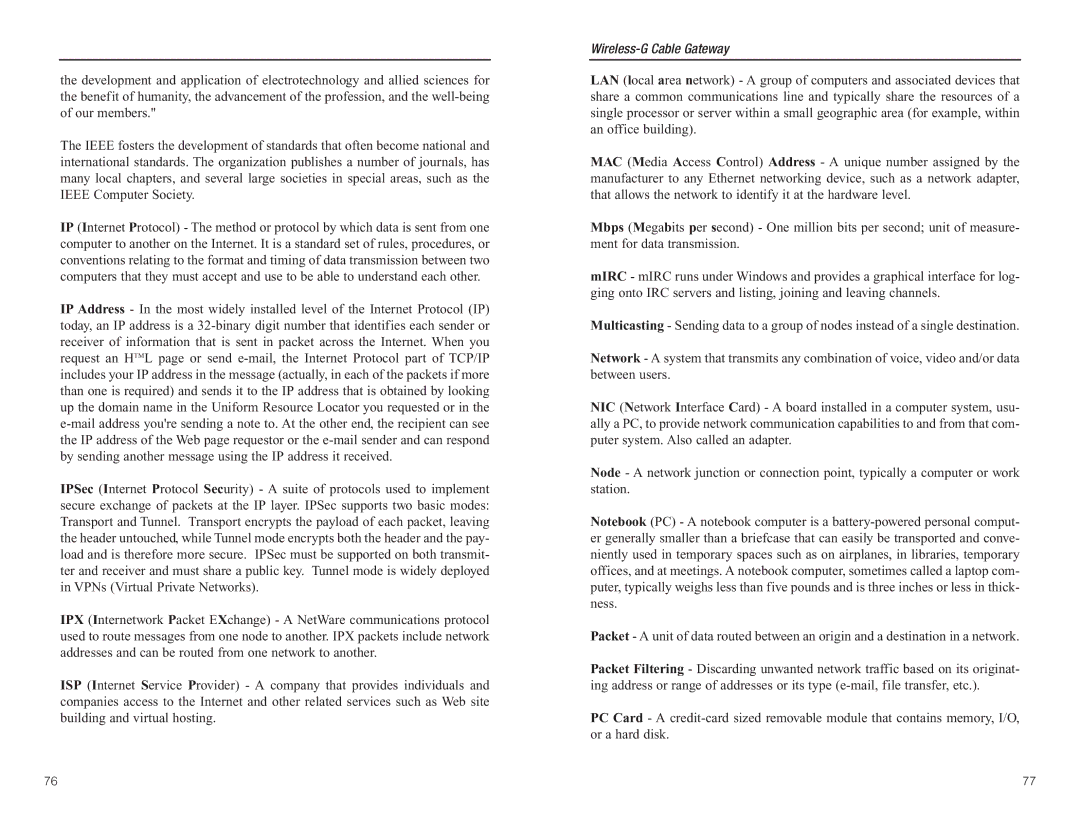the development and application of electrotechnology and allied sciences for the benefit of humanity, the advancement of the profession, and the
The IEEE fosters the development of standards that often become national and international standards. The organization publishes a number of journals, has many local chapters, and several large societies in special areas, such as the IEEE Computer Society.
IP (Internet Protocol) - The method or protocol by which data is sent from one computer to another on the Internet. It is a standard set of rules, procedures, or conventions relating to the format and timing of data transmission between two computers that they must accept and use to be able to understand each other.
IP Address - In the most widely installed level of the Internet Protocol (IP) today, an IP address is a
IPSec (Internet Protocol Security) - A suite of protocols used to implement secure exchange of packets at the IP layer. IPSec supports two basic modes: Transport and Tunnel. Transport encrypts the payload of each packet, leaving the header untouched, while Tunnel mode encrypts both the header and the pay- load and is therefore more secure. IPSec must be supported on both transmit- ter and receiver and must share a public key. Tunnel mode is widely deployed in VPNs (Virtual Private Networks).
IPX (Internetwork Packet EXchange) - A NetWare communications protocol used to route messages from one node to another. IPX packets include network addresses and can be routed from one network to another.
ISP (Internet Service Provider) - A company that provides individuals and companies access to the Internet and other related services such as Web site building and virtual hosting.
Wireless-G Cable Gateway
LAN (local area network) - A group of computers and associated devices that share a common communications line and typically share the resources of a single processor or server within a small geographic area (for example, within an office building).
MAC (Media Access Control) Address - A unique number assigned by the manufacturer to any Ethernet networking device, such as a network adapter, that allows the network to identify it at the hardware level.
Mbps (Megabits per second) - One million bits per second; unit of measure- ment for data transmission.
mIRC - mIRC runs under Windows and provides a graphical interface for log- ging onto IRC servers and listing, joining and leaving channels.
Multicasting - Sending data to a group of nodes instead of a single destination.
Network - A system that transmits any combination of voice, video and/or data between users.
NIC (Network Interface Card) - A board installed in a computer system, usu- ally a PC, to provide network communication capabilities to and from that com- puter system. Also called an adapter.
Node - A network junction or connection point, typically a computer or work station.
Notebook (PC) - A notebook computer is a
Packet - A unit of data routed between an origin and a destination in a network.
Packet Filtering - Discarding unwanted network traffic based on its originat- ing address or range of addresses or its type
PC Card - A
76 | 77 |
